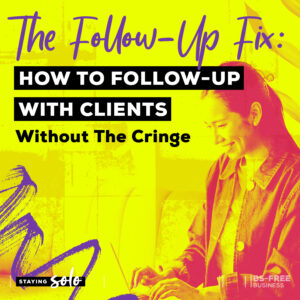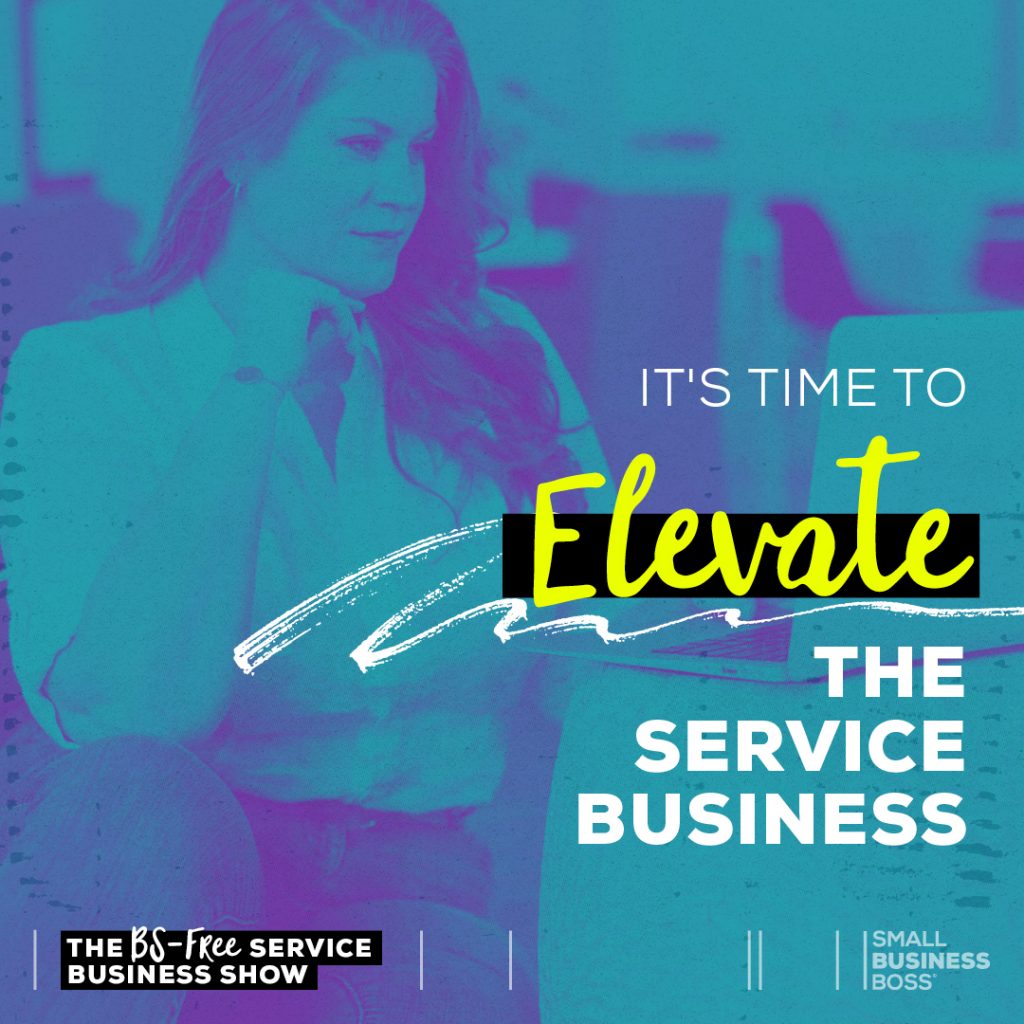
Search the site:
It’s Time to Elevate the Service Business
If you’re a service provider who has ever felt disrespected by how people talk about service businesses, or you’ve wondered if you should just throw it all in for something simpler, then this episode is for you. In this episode we’re unpacking why people want to quit services, what to do about it, and why it’s time to elevate the service business.
Do you know what really pisses me off? This one will probably come as no surprise to you as a listener of this show, so let’s go there.
It’s how service businesses are treated as less than in the online business world. Like a stepping stone to something bigger and better, because if you can, a course or program is the BEST possible way to make money.
I’m sick of it. And I’m sure you are too. Because so many of the messages that talk trash about service businesses have nothing to do with the power of the business model.
Instead, people who teach you how to create a course, run a program or whatever else need a villain in their story. So they cast service businesses in this role so they can bring up a host of problems to make their thing seem that much more enticing.
It’s things like:
- Are you tired of trading dollars for hours?
- Stop depending on client invoices to get paid.
- Are you burnt out offering 1:1 services?
The end result is that people believe these stories. It plants a seed that grows into them thinking that running a service business is too hard. They start to think that the only way they can be happy in their business is to abandon services and embrace a different business model.
I know I fell for it. Hook, line and sinker. I thought launching a course would be so easy based on everything I was taught.
Which is why I want to provide a counterpoint, and explore how as service providers there’s an alternative to abandoning our service business. We have an opportunity to fix the things that make shifting business models so tempting, and elevate our service businesses so we finally get the respect we deserve in this industry.
Why People Want to Quit Doing Services
To understand why moving away from services is so tempting, we need to unpack what’s going on that makes people want to quit.
About five or six years ago, I was bumping up a number of things in my business that I believe are very common for service business owners.
Two of which I believe are the biggest reasons hands down that people start to reconsider offering services.
Challenges with Boundaries
The first one is boundaries. For me, I’d had a run of challenging clients that were pushing all my buttons, and in this period of time, I had more client conflicts that I’d ever had in my entire career. In fact, If I were to go back over my entire time being self-employed, 85% of my “bad” client situations were from this time period.
I found myself feeling worn out, and quite frankly over it. I wondered if I should keep working with clients. This was definitely a sign of burnout –– a loss of meaning in your work. (And if you want more on burnout, check out this episode.)
I wasn’t in a great place, and as a result, I was lured into the course creation game. Over about a 18 month time period I created a number of courses, which were met with a moderate level of success. I invested a lot of time and money, but I did make money from each one.
This situation may sound very familiar to many of you, as working with clients can really push your boundaries and make you feel like you’re all kinds of done. So it’s super easy to think that another business model is THE answer to those challenges. If you’re not working with clients one-to-one, then you’re not going to face the same problems, right?
In my case, that couldn’t be further from the truth. For me, I simply traded in my boundary problems from offering 1:1 services into a different scenario. One where I had students who needed my time and attention, and I had to still show up to provide them with a specific level of service.
I was also confronted with the fact that without a 1:1 relationship, people found it harder to get what they needed, so they could be demanding, disrespectful and harsh. Again, I found myself with my buttons being pushed, but instead of feedback on a piece of content it was in the form of rude customer service emails.
By changing business models, my boundary issues weren’t suddenly gone, but instead exacerbated. Where I thought I was going to trade up, I found myself with a whole new host of issues.
So I devoted myself to services, and in doing that I defined better boundaries for me and the business, and did my best to hold them. I dug into what does (and doesn’t) work for me, and it’s made me so much better today as a service provider. Today, I truly enjoy my work and the clients I serve because I don’t have the drama I had before.
The Income Ceiling
During the same time period, I was running up against what I saw as a revenue ceiling in my business. I was coming off a year where I’d more than doubled my revenue, and I didn’t see how with services I’d be able to keep growing.
So, as steeped as I was in the online business world (plus the support I was receiving at the time), offering courses was the natural progression.
Truthfully, I never thought to question if that was the logical next step. I never created a business case for these offerings or analyzed what it would really take to make the kind of revenue I wanted. I simply trusted what I was being told and taught, and focused a lot of time, energy and money on creating courses.
I know I’m not alone in this. The norm across the industry is to go from offering services to a group program or courses in order to grow revenue.
That conventional online business wisdom is something I firmly believe needs to be challenged by us as service providers, because the revenue ceiling isn’t real.
After a few launches that made me question everything, I shifted back to really focusing on my services. I quickly found that getting to a new level of revenue had nothing to do with courses, and everything to do with pricing, packaging and positioning.
By focusing on the three Ps in my service business, I was able to make more money, and do so much faster than I ever was able to do with courses. Would I have eventually got there with courses? Most likely, but it involved doing a lot of work that I simply wasn’t all that interested in doing, such as Facebook Ads.
The same has been true for the majority of the service business owners I work with. For example, I work with a number of micro agency owners in The Agency Mastermind, and they’ve all committed to offering done-for-you services. Their revenue isn’t capped in any way, and they’re strategically hiring and making choices in terms of their pricing, packaging and positioning that enables them to grow in a simple and sustainable way.
We need to stop seeing adding a program or course as a default option for how to make more revenue and instead look at what will best serve us. There’s nothing wrong with these business models, but we need to ensure that they’re in service of us, and they’re truly going to help us meet our goals.
The Seduction of the Course Model
When you offer services and you work in the online business world it’s really easy to get seduced into thinking that offering a program or course would be so much simpler.
Especially as we’re told day in and day out that you can make so much more money doing much less work.
The problem with this story is that what we’re being sold is a gross oversimplification. First and foremost, it doesn’t address the two big issues that many service providers struggle with: boundaries and how to make more money. Not even close.
In terms of boundaries, moving to a one-to-many model doesn’t mean that your boundaries will be magically fixed. So what if instead of blaming clients, we took a hard look at what we need to do in order to have stronger, healthier boundaries with our clients?
And when it comes to income, what if we didn’t believe there was a cap on our income as service providers?
Honestly, it’s much easier to blame your clients or an income ceiling than to unpack what you need to change and actually do the work to fix it. But unless you do, there’s no business model in the world that can fix these challenges.
Which brings me to the next point. If you’re struggling with boundaries or feeling burnt out, you need to assess what works best for you in terms of your business model, how you want to spend your time, and the type of relationships you have with your clients.
A big piece missing from this conversation is about the volume of people you’re working with and how you like to work best. Nothing will drain your energy than a business model that isn’t a good fit for you.
Let me run you through a quick example. To make $10k, do you want 10 clients who paid you $1000, or 50 clients who paid you $200? Then consider how long you’re serving them for. Let’s say your 10 clients you only work with for a period of 30 days. But with your 50, they’re in your program for at least a year or more.
On the surface, the 50 people at $200 may seem more enticing, but you need to consider the time and effort involved in each scenario and what it costs you energetically.
Plus, you need to factor in how you like to work with people, and how involved in getting results you like to be. You may find that you value the relationship over the more hands-off approach. You may find that you like having a shorter, less open engagement.It’s important to note that this isn’t about good or bad in terms of the business model, but rather looking at what really works best for you. So many times I see talented service business owners going the course route without considering any of this.
What I found, and I know many of my clients have found too, is that they enjoy offering services, but they need to streamline. They need to offer less, and create packages or productize their services. In order to do the type of work they want to do, while being of the greatest service to their clients, they need to take ownership of how they engage with clients.
Then, they need to focus on creating and holding better boundaries with clients for the lifetime of the relationship. If you’re struggling with boundaries, sit down and look at what is and isn’t working for you, and then figure out how to start with new ones. As I’ve said before on this show, there’s always an opportunity to put new boundaries in place and retrain your clients.
Make your boundaries clear to clients, so they understand how you can best work together. Because make no mistake, having a service business isn’t about being in the constant, relentless service of your clients, but rather delivering upon what you agreed upon. That’s why I’m a superfan of spelling out the rules of engagement with clients from the first interaction.
On consult calls, I take control of the agenda and the conversation. In proposals, I clearly state how we work together and what they can expect, and then reiterate it in the contract. And then, I work to ensure that I stick to the plan, and when I don’t I get myself back on track.
Boundaries require effort, but it is possible to have them when you offer services, so that’s not a good enough reason to run away from the service business model if it’s working for you otherwise.
Making More Money Isn’t About the Business Model
Next, let’s look at the “how to make more money” factor.
What a lot of people don’t take into account is the time, effort, money and skill set it takes to run a successful mastermind, membership, course or group program style business. It’s often much more resource intensive than a service business, and in the startup phase, there are inevitable startup costs.
Those startup costs, they’re quickly going to eat into your profit, so it may take longer than you realize to hit your money goals.
Building a platform and then building, launching and delivering a membership, mastermind, group program or course typically takes longer than anyone realizes and costs more to get off the ground.
The more hands off the program is and the higher the number of people you need to enroll, the more automation you’re doing to need, and that means specific tools along with potentially support to help you use those tools. Plus, you may need tools or support with your marketing strategy and implementation from strategists to copywriters to graphic designers.
I know, we’ve all heard the “I launched this with 100 people on my list and made six figures” stories. But that story is a unicorn, and not the typical experience of most people. Plus, it doesn’t take into account a number of factors, such as industry and market saturation. Things like smaller and tighter the niche and first mover advantage matter.
Years ago I had successful membership in the crafting industry with over 300 members. You want to know why we had 300 members? Because it was the only thing of its kind. I’d be hard pressed to replicate that experience with a membership in the online business world with a marketing or copywriting program.
The lesson in all of this, is that these more “passive” offerings aren’t nearly as fast of a path to cash as the celebrity entrepreneurs would have you believe.
Again, it 100% can be done, but it should be recognized that it’s not always a fast way to make more money. Don’t discount the time it takes to get traction, plus the requirements needed for tech and the time involved to make things run.
Which is why I’d challenge you to consider if a course or program or membership is what you really need to make more money, or if you can go back to your pricing, offers, or even your target market to look at what small, highly sustainable things you could do.
Maybe you simply need more clients, and more effort placed on your lead gen. Maybe you need to charge more. Maybe you need to work with a different type of client. There are so many options within your service business, and those are equally as valid as trying to shift to a brand new business model.
That’s what I’ve done in my agency, and let me tell you, it’s paid off in a big way. By shifting our target market, we’re able to charge more, work with fewer clients and be much more profitable.
Anyone who tells you the real money is only in courses is lying to you. There’s plenty of money to be made with services.
Let’s Elevate the Service Business
Everything we’ve talked about in this episode is to help you think differently about your service business and to challenge this idea that service businesses are a stepping stone to something else.
They’re not. If anything, we need to elevate the service business model. As an industry, we’re seeing more and more luxury pricing, and high ticket pricing for low touch, low quality offerings become the norm.
Why as an industry is it normal to spend four or five figures to be in a group situation, but not for personalized service designed to meet our specific needs?
Service providers, especially those offering done-for-you services, are really and truly the ones delivering luxury in this industry.
Think about it. There’s nothing special or luxurious about having to do it for yourself. Or waiting to see if your question will be answered on a group call. Or taking guidance from a success coach who’s never run their own business and is being paid $20 bucks an hour.
Real luxury and VIP-level service comes from having it done by an expert and not wasting your time and money. From not having to take up precious brain power trying to make someone else’s system fit your business. From not having to learn things that are best left to experts.
That’s the energy we need to bring to offering our services. We need to value what we offer our clients, and elevate the hell out of what we do, starting today.
So, how do we do that? Here are five specific ways that I believe are key to elevating ourselves as service providers.
#1. Step up and own our expertise
It’s time to stop second guessing your skills, and own your expertise. In a world full of invented authority and celebrity entrepreneurs, we need more service providers to show up and be the counterpoint. True subject matter expertise is in short supply, and there’s room for service providers, not just people teaching things they’ve done exactly once. Remember, you don’t need to be an expert on everything, just the one thing you’re the amazing at.
#2. Take a trust-driven approach to building relationships
Fear-based marketing and sales is out. Sure, it works, but the cost is too high, and treating your potential clients with respect and dignity is always in style. By focusing on building trust with our community, potential clients and existing clients you’ll build strong relationships. I’ll be talking more about this in the next few weeks so stay tuned.
#3. Position our offers against the DIY route
People hire done-for-you service providers because they need help, but here’s something you may not realize. Many times they’re trying to decide if it’s a skill set they need to acquire for their business or not, especially as online business is full of offers to teach us to be experts on all the things.
Here’s the thing: your best clients don’t really want to do that, and you can be the alternative. While you need to position against other service providers with clear differentiation, you need to also address the fact that DIY options will waste their time and money.
#4. Value our services and price accordingly
As a group, service providers are leaving money on the table. This isn’t about you gouging people, but ensuring you’re being appropriately compensated for your skills and experience. If shady celebrity entrepreneurs can roll up and charge $10k for crap that’s in their $10 ebook, you can charge a premium for your services.
Part of elevating your services is you ensuring you’re charging enough to deliver the goods for your clients.
#5. Provide a client experience that backs up our elevated position
If you want to be known for what you do and be paid well for it, you need to provide a client experience to back up that position. Being a pro, means you deliver like one too.
Providing a client experience is actually much simpler than people realize. It starts with ensuring that you have the time and space needed to deliver as promised. When you’re grinding it out with too many clients, that’s what starts to slip.
Beyond that, think about what your clients really value and create a process that delivers on that. Most service providers are well-intentioned, but then they miss out on small but significant opportunities to build trust with clients and enhance the client experience.
Are You Ready to Elevate?
Trends will come and go in online business, but expertise and getting shit done for you will never go out of style. And your ideal clients, the best clients, the ones you’re going to want to work with, get that.
This is my challenge to you. What’s one way you can elevate your service business starting right now?
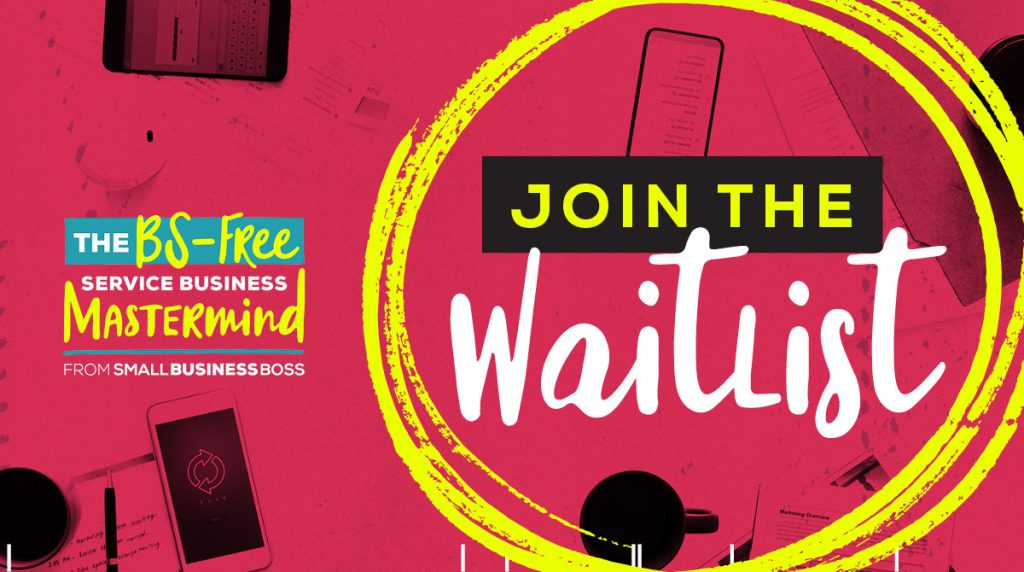
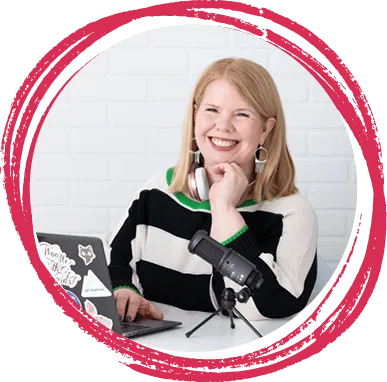
I’m Maggie Patterson (she/her), and services businesses are my business.
I have 20+ years of experience with client services, am a consultant for agency owners, creatives, and consultants, and vocal advocate for humane business practices rooted in empathy, respect, and trust.
Read or Listen to the Latest
For Solo Business Owners
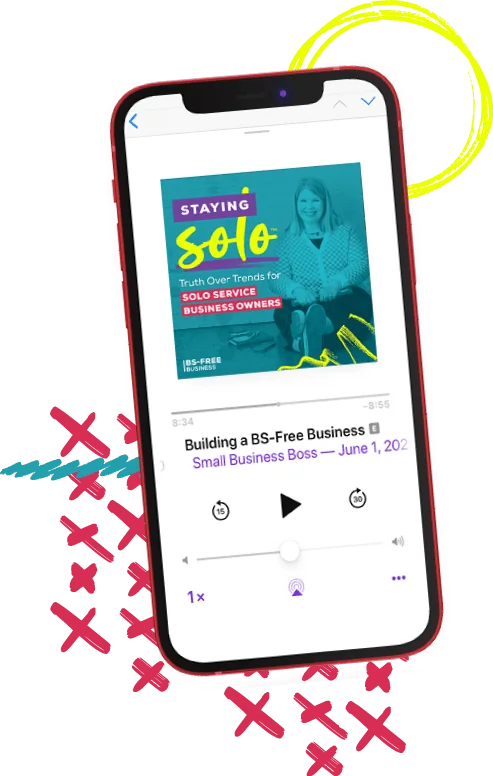
Growing a solo service business is tough.
It’s even harder when you’re bombarded with BS advice that steers you away from your values and why you started your business in the first place.
This is the podcast for solo creatives and consultants who want to remain as a team of one and have zero interest in the hustle and grind of typical business teachings.
Subscribe now and never miss an episode.
For Micro Agency Owners
Most podcasts for agency owners obsess over revenue growth as the ultimate success metric.

But here’s the truth: not everyone wants to make millions. Your goal might be to build a sustainable business that lets you have a life and doesn’t run you into the ground.
Join me as I spill my shameless confessions and share everything I’ve learned about building a micro agency that skips the BS of tired and typical agency teachings.
Follow Now on All Major Podcast Platforms

